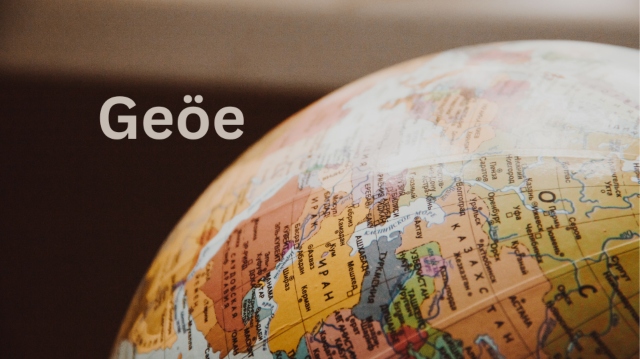General
A Quarter Century of Search: Celebrating Google’s 25e Verjaardag (25th Birthday)

On September 27th, 2023, Google marked a significant milestone: its 25e verjaardag (Dutch for 25th birthday). From its humble beginnings in a Stanford dorm room to becoming a global tech giant, Google’s journey has revolutionized the way we access and interact with information. This article explores Google’s remarkable story, its impact on our lives, and what the future holds for this innovative company.
From Dorm Room to Global Phenomenon: A Brief History of Google
The story of Google begins in 1995 when two Stanford University PhD students, Larry Page and Sergey Brin, met. They shared a common vision: to organize the world’s information and make it universally accessible and useful. Their research project, a search engine they named “BackRub,” aimed to rank websites based on their relevance and popularity, determined by the number of links pointing to them.
In 1998, BackRub officially became Google, a play on the word “googol,” a mathematical term for the number 1 followed by 100 zeros. The new name reflected the company’s ambitious goal of organizing an immense amount of information on the web.
Google’s search engine quickly gained popularity due to its innovative algorithm and user-friendly interface. Unlike other search engines at the time, Google prioritized relevance over keyword matching. This made it easier for users to find the information they needed quickly and efficiently.
Over the years, Google has expanded its reach far beyond search. Today, the company offers a wide range of products and services, including:
- Gmail: A free email service used by billions of people worldwide.
- Google Maps: A comprehensive digital mapping platform with navigation, traffic updates, and point-of-interest information.
- YouTube: The world’s most popular online video platform.
- Android: A mobile operating system used on billions of smartphones and tablets.
- Google Drive: A cloud storage service for documents, photos, and other files.
- Pixel: A line of smartphones designed and developed by Google.
- Chrome: A popular web browser known for its speed and security.
Google’s commitment to innovation has driven its remarkable growth. The company invests heavily in research and development, pushing the boundaries of technology in areas like artificial intelligence, self-driving cars, and virtual reality.
The Impact of Google: Changing the Information Landscape
Google’s influence on our lives is undeniable. Here are some ways Google has impacted the information landscape:
- Democratization of Information: Google has made information more accessible than ever before. Anyone with an internet connection can access a vast amount of information on virtually any topic.
- Shifting Search Habits: Google has fundamentally changed how we search for information. We no longer need to remember complex website addresses; we simply type in our query and get relevant results within seconds.
- Rise of the Knowledge Economy: Google has played a key role in the growth of the knowledge economy by making information readily available for research, education, and business development.
- The Power of Data: Google collects and analyzes massive amounts of data, allowing them to personalize search results, target advertising, and develop new products and services.
However, Google’s dominance also raises concerns about privacy, data security, and the potential for manipulation of search results. It’s important to be aware of these issues and use Google’s tools responsibly.
A Look Ahead: What’s Next for Google?
As Google celebrates its 25e verjaardag, it’s natural to wonder what the future holds for the company. Here are some potential areas of focus:
- Artificial Intelligence (AI): Google is a leader in AI research, and we can expect to see even more AI-powered products and services in the future.
- The Future of Search: Google will likely continue to refine its search algorithms to provide even more relevant and personalized results.
- The Connected World: Google is investing heavily in technologies like smart homes and wearable devices, aiming to connect us to information and services in new and innovative ways.
- Ethical Considerations: As Google’s influence grows, it faces increasing pressure to address concerns about privacy, data security, and the potential for bias in its algorithms.
Ultimately, Google’s future will depend on its ability to continue innovating, addressing ethical concerns, and adapting to the ever-changing tech landscape.
Frequently Asked Questions (FAQs)
- Who founded Google?
Google was founded by Larry Page and Sergey Brin.
- What was Google’s original name?
Google’s original name was BackRub.
- What are some of Google’s most popular products?
Some of Google
General
Contexto Answer: Cracking the Context Code

Contexto is a word game that has taken the internet by storm, captivating players with its unique twist on the popular guessing game format. Unlike its predecessor Wordle, which focuses on the exact letters of a hidden word, Contexto delves deeper, challenging players to uncover the secret word based on its context.
This article delves into the world of Contexto, guiding you through its gameplay, strategies, and how to find the elusive “Contexto Answer” for the day’s puzzle.
Unveiling the Mystery: How Contexto Answer
Gameplay Basics:
Contexto Answer presents you with a daily secret word. Your mission: to guess this word by submitting words and analyzing the feedback provided by the game’s AI. Here’s how it works:
- Unlimited Guesses: Unlike games with limited attempts, Contexto allows you to take as many guesses as needed to crack the code.
- Context is King: The key to success lies in understanding how your guesses relate to the secret word. The game doesn’t reveal letters but assigns a position based on contextual similarity.
- Number Ranking: Each guess receives a ranking between 1 and 9999. The lower the number, the closer your guess is to the secret word in terms of its contextual usage.
Understanding the Color-Coded Clues:
Contexto offers visual cues to guide your guesses. After submitting a word, you’ll see it displayed in one of three colors:
- Green (1-300): You’re on the right track! Words in green are highly contextually relevant to the secret word. Aim for this zone to get closer to the answer.
- Yellow (301-1500): Getting warmer, but not quite there. Words in yellow are somewhat related to the secret word, but not as close as those in green.
- Red (Above 1500): Back to the drawing board. Red indicates your guess has little to no contextual connection to the secret word.
The Power of Patience:
There’s no time limit in Contexto, so take your time and analyze the clues provided. With each guess and its corresponding color, you build a picture of the secret word’s context.
Seeking Hints (Optional):
If you get stuck, Contexto offers a hint option (represented by three dots). Clicking this will reveal a new word closer to the secret word, giving you a valuable nudge in the right direction. However, using hints sparingly is recommended to maintain the challenge and satisfaction of solving the puzzle yourself.
Conquering Contexto: Winning Strategies
1. Choosing Your First Word:
The first guess sets the tone for your Contexto journey. Here are some tips:
- Common Words: Start with a common word that appears frequently across various contexts. This helps gauge the overall direction and avoid getting stuck in a niche category.
- Broad Categories: Words like “thing,” “place,” or “action” can be good starting points as they encompass a wide range of possibilities.
- Previous Day’s Answer (Optional): If you know the answer from the previous day, consider a word closely related but not identical. This might provide valuable context clues.
2. Decoding the Color Codes:
Once you start receiving color-coded feedback, it’s time to refine your approach:
- Green Goldmine: When you land a green word, explore synonyms, related concepts, and words that share similar contexts.
- Yellow Stepping Stones: Use yellow words as stepping stones towards greener pastures. Look for words that bridge the gap between your current guess and the secret word’s context.
- Red Rejections: Don’t dwell on red words. Acknowledge the dead end and move on with a new guess that steers clear of that context.
3. Leverage the Power of Elimination:
As you progress, eliminate possibilities based on the feedback. For example, if a guess related to emotions receives a red mark, you can rule out words solely focused on feelings.
4. Diversifying Your Guesses:
Don’t get stuck in a rut. If you’re consistently landing in the red zone, try a completely different category of word to explore new contextual avenues.
5. Collaboration is Key (Optional):
Stuck and can’t seem to crack the code? Discussing your guesses and color-coded clues with friends or online communities can offer valuable insights and fresh perspectives.
FAQs: Frequently Asked Questions About Contexto
Q: Is there a daily reset time for Contexto?
A: Yes, the daily Contexto puzzle resets at midnight local time.
Q: Can I play past Contexto puzzles?
A: Unfortunately, the game doesn’t currently offer the option to play previous day’s
General
Peúgo: Unveiling the Two Sides of a Word

The Portuguese language is rich with diverse vocabulary, and sometimes a single word can hold surprising depth. “Peúgo” is one such example. Depending on the context, it can have two distinct meanings, making it a fascinating word to explore. This article delves into the world of peúgo, uncovering its etymological roots, its contrasting definitions, and its usage in everyday Portuguese.
Unveiling the Etymology: Where Does Peúgo Come From?
The exact origin of “peúgo” remains unclear. However, some linguists propose a connection to the word “peúga,” which translates to “sock” in English. This theory suggests that “peúgo” might have originated as a variant or diminutive form of “peúga,” possibly referring to a shorter type of sock.
Another possibility lies in the realm of onomatopoeia. The sound “peúgo” could be a playful representation of someone splashing in water. This theory, however, lacks strong etymological evidence.
Without a definitive origin story, the word “peúgo” holds a certain mystique. Its ambiguity adds a layer of intrigue to the Portuguese language.
Two Sides of the Coin: The Dual Meanings of Peúgo
The true essence of “peúgo” lies in its ability to represent two contrasting concepts:
-
Meia Curta (Short Sock): This is the most common meaning of peúgo in contemporary Portuguese. It refers to a type of sock that reaches just above the ankle, often worn with casual shoes or sneakers.
-
Hidrolátrico (Water-Lover): This lesser-known definition of “peúgo” is an adjective with a more whimsical character. It describes someone who has a deep love for water, someone who enjoys swimming, diving, or simply spending time near water bodies.
The stark contrast between these meanings highlights the beauty and complexity of language. A single word can morph into different forms, catering to various contexts and adding a touch of surprise for the listener.
Understanding Usage: When to Use “Peúgo”
Knowing the two meanings of “peúgo” is only half the battle. Here’s a breakdown of how to use it correctly in different situations:
Using “Peúgo” as a Noun (Meia Curta):
- When discussing clothing: “Preciso de comprar peúgos novos para a academia.” (I need to buy new peúgos for the gym.)
- Describing someone’s attire: “Ele estava usando jeans e peúgos brancos.” (He was wearing jeans and white peúgos.)
Using Peúgo as an Adjective (Hidrolátrico):
- Highlighting someone’s love for water: “Minha irmã é tão peúga, ela adora nadar no mar.” (My sister is such a peúgo, she loves swimming in the ocean.)
- Describing a group of water enthusiasts: “O clube reúne um grupo de peúgos que gostam de mergulho.” (The club brings together a group of peúgos who enjoy diving.)
Points to Remember:
- While “peúgo” (sock) is the more common meaning, using it as “hidrolátrico” adds a touch of creativity and playfulness to your conversation.
- The adjective form “peúgo” is less frequently used compared to the noun form.
Exploring the Nuances: Formal vs. Informal Settings
The context in which you use peúgo also plays a role. Here’s a quick guide:
-
Formal Settings: In formal situations, it’s best to stick with the more standard vocabulary. Opt for “meia curta” (short sock) instead of “peúgo” (sock). Similarly, “amante da água” (water lover) would be a safer choice than “hidrolátrico” (water-lover) in formal contexts.
-
Informal Settings: Among friends and family, feel free to use “peúgo” in both its noun and adjective forms. It can add a touch of informality and lightheartedness to your conversation.
Remember: Context is key. Choose the meaning and form of “peúgo” that best suits the situation and the level of formality you’re aiming for.
Fun with “Peúgo”: Examples and Idioms (if any)
There aren’t any specific idioms directly related to “peúgo.” However, you can use the word creatively in sentences to add a touch of humor:
- “Ele é tão desorganizado que perdeu um peúgo e nem percebeu!” (He’s so disorganized, he lost a peúgo and didn.
General
The Fascinating World of Geöe: An In-depth Exploration
-

 Fashion2 years ago
Fashion2 years agoBest Free Ambigram Generators to Design Tattoo and Art
-

 General2 years ago
General2 years agoSetup Cross-Domain Tracking In Google Tag Manager
-

 Technology2 years ago
Technology2 years agoThe ascent of the ‘business technologist’ and ‘hyperautomation’
-

 Uncategorized1 year ago
Uncategorized1 year agoThe Best Host Bars In korea
-

 Health and Fitness1 year ago
Health and Fitness1 year agoWhat I Wish Someone Had Told Me About Comfi Pure Contact Lenses
-
Entertainment2 years ago
BUSINESSHow To Keep Readers Engaged With Your Monthly Newsletters
-
Entertainment2 years ago
9Anime: Best Free Anime Streaming Website, 9Anime.gg Alternatives
-
Fashion1 year ago
All Time Best Selling Outfits Of Yellowstone TV Series

